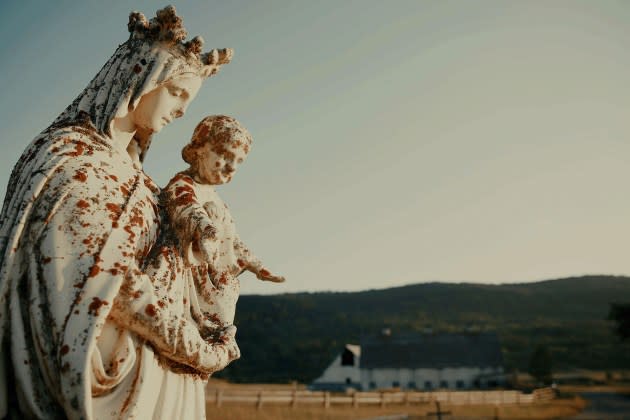‘Sugarcane’ Review: Enlightening and Infuriating Look Into Systematic Abuse at an Indian Residential School

It’s altogether likely that many non-Indigenous people knew nothing about the abuse and disappearances of Native American children that occurred over decades in residential Indian schools throughout North America until those outages inspired a wrenchingly potent subplot last year for the Taylor Sheridan-produced TV series “1923.” But the truth behind that fact-based fiction is even more shocking, and infuriating, as detailed in “Sugarcane,” the remarkable film that received a well-deserved jury prize for documentary direction at this year’s Sundance Film Festival.
Co-directors Emily Kassie and Indigenous filmmaker Julian Brave NoiseCat show restraint and empathy while cataloguing the horrors that were endemic at the now-shuttered St. Joseph’s Mission residential school near the Sugarcane Reservation of Williams Lake in British Columbia. But their disciplined approach to their material actually makes the movie even more effective in its cumulative impact, especially during interviews with survivors of St. Joseph’s — including NoiseCat’s father and grandmother — who only gradually dredge up memories they obviously have long sought to suppress.
More from Variety
The school, which did not close until 1981, was one of many state-supported institutions — 139 in Canada, 408 in the United States — operated for more than a century to deal with “the Indian problem” by more or less brainwashing children into forgoing their Native languages and customs, and becoming acceptably assimilated. Operated by Catholic priests and nuns, who often were unwaveringly demanding to the point of fanatical sadism, the most infamous of these schools were little better than prison camps. St. Joseph’s ranked among the worst of the worst.
“Sugarcane” meticulously details through testimonials and archival material how countless students died while trying to escape, or by committing suicide. We hear of priests sexually abusing male and female students, fathering children with helpless girls and sometimes disposing of unwanted (and incriminating) babies by tossing them into incinerators. Ed, NoiseCat’s father, barely escaped such a dreadful fate; his knowledge of that early brush with death is rendered here as a festering trauma that has long colored the strained relationship between father and son.
Their emotional reconciliation is just one of the narrative threads employed by “Sugarcane” to tell its deeply moving story of evil and its aftermath. The documentary also follows the investigation launched by Williams Lake First Nation people after the 2021 discovery of more than 200 potential unmarked graves of Indigenous children at the site of the former Kamloops Indian Residential School — which was followed by a dramatic uptick in Church fires attributed to arson — and the 2022 discovery of 50 such graves outside the cemetery at St. Joseph’s.
Two individuals involved with the investigation, Charlene Belleau and Whitney Spearing, doggedly pursue leads and piece together evidence to document the full extent of the crimes against humanity at St. John’s, despite scant support from government agencies and the understandable reluctance of former students to testify. At one point, Belleau actually makes phone contact with one of the school’s surviving priests, only to be politely but quickly brushed off before the call abruptly ends. It’s one of several moments in the documentary that could drive sympathetic viewers to shout curses at the screen.
Another major figure in “Sugarcane”: Rick Gilbert, former chief of Williams Lake First Nation, who has somehow held true to his Catholic faith despite witnessing the atrocities at St. Joseph’s — and suspecting his father may have been one of the priests — and even takes it upon himself and his wife Anna to protect religious items from his church after hearing about the aforementioned arson epidemic. Gilbert winds up being invited to the Vatican for a meeting between Pope Francis and Indigenous Canadians. The pope sounds truly sorry for what happened to Gilbert and other students at St. Joseph’s. But, as the filmmakers repeatedly emphasize, words — whether they come from Church leaders or Canadian prime minster Justin Trudeau — mean nothing without action.
As powerful as “Sugarcane” is on an initial viewing, it becomes even more troubling as you replay it in your mind afterwards and reconsider unanswered questions and seemingly throwaway details. Early on, Julian NoiseCat appears positively amazed when he wins first prize for traditional dancing at a First Nations powwow; you can’t help thinking that, although he was not a St. John’s student himself, he, too, has felt distanced from his heritage. (On the other hand, it’s hinted that he and his father are bound in part by their sharing an abiding appreciation for fellow Canadian Neil Young.)
Initially, you might wonder why more of the tormented children never reported what they saw and experienced to their parents or local authorities. But then you comprehend that even if they had — and there are numerous indications that they did — they were ignored, or silenced, until they locked their experiences away in that corner of the human heart where wide-awake nightmares are reflexively banished, but never really forgotten.
“Sugarcane” is the product of humane and insightful filmmakers who are determined to never let anyone forget, and put their moral outrage to exemplary good use. Still, you’re left with the forlorn suspicion that their best efforts to find justice for the living and the dead, however commendable, are part of a campaign that might be endless. Meanwhile, the weight of unbearable memories continues to drive survivors of St. John’s and other schools of its kind to substance abuse and suicide. At the end, we’re told, “Searches for unmarked graves are underway at more than 50 former institutions.” And yet, while “Indigenous people are still dying from residential schools,” more are “still living, despite them.” Maybe God is on their side after all.
Best of Variety
Sign up for Variety’s Newsletter. For the latest news, follow us on Facebook, Twitter, and Instagram.
